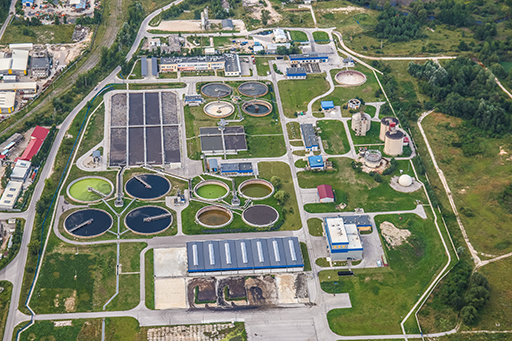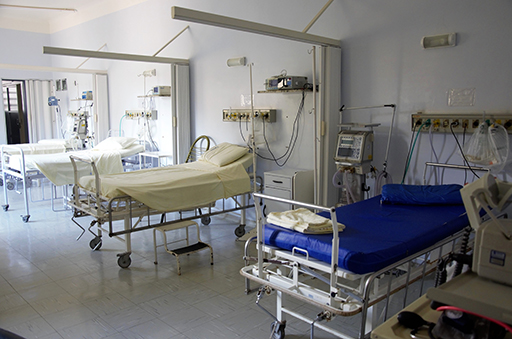3.2 Human activities that affect resistance in the environment
In Section 2 you learned about many processes that lead to introducing resistant bacteria or ARGs from humans or animals into the environment.
Human activities can also introduce antibiotic residues into the environment. Residues of antibiotics are small amounts of antibiotics or their breakdown products that are present in pharmaceutical, human or animal waste after production or use of antibiotics. (You will learn more about residues later in the course.)
Many transmission processes are affected by how sanitation – the treatment of human excrement – is managed. Therefore, there is a strong linkage between AMR in the environment and the concept of water, sanitation and hygiene (WaSH). (If you are interested in learning more about WaSH you may be interested in The Open University’s OpenWASH modules [Tip: hold Ctrl and click a link to open it in a new tab. (Hide tip)] .)
Sanitation
Human faecal waste can be handled in different ways, ranging from open defecation through usage of pit latrines or septic tanks, to flushing to sewer pipes with subsequent treatment in wastewater treatment plants.
An overview of the state of sanitation in participating countries is reviewed in the WHO/UNICEF Joint Monitoring Programme for Water Supply, Sanitation and Hygiene (JMP) (n.d.). Some types of wastewater treatment – most importantly wastewater treatment plants (WWTPs), such as the example in Figure 6 – have been investigated in detail with respect to their effect on the discharge of resistant bacteria and pollutants. Generally, WWTPs considerably reduce the amount of faecal bacteria and ARGs released to the receiving surface waters. Often, they reduce their concentrations a hundredfold – that is, an efficiency of >99 per cent. (An optional activity on the calculation of the effectiveness of WWTPs is available in the extended learning section of the course.)
However, concentrations of bacteria and ARGs in

You can explore sanitation data for your country in the optional activity in the extended learning section of the course.
There have been a number of studies on the effectiveness of WWTPs; however, there is much less information on the role that non-improved sanitation plays in the spread of resistance. Most importantly, leaking pit latrines and septic tanks can be sources of resistance contaminating the environment, including groundwater and nearby surface waters, especially under conditions of heavy rain. Heavy rainfall can also disrupt the functioning of WWTPs, leading to ‘stormwater’ discharge – that is, the release of untreated raw wastewater into water bodies.
Healthcare in hospitals
Hospitals are a specific point source of AMR because antibiotics are commonly used in hospitals, and patients can carry or be infected with resistant bacteria that are then excreted in the faeces (Figure 7).
Activity 5 What’s in hospital wastewater?
Which of the following agents would you expect to be at a higher concentration in hospital wastewater compared to wastewater from the general population (municipal wastewater)?
- antibiotic-resistant bacteria
- fungi resistant to fungicides
- antibiotics
- biocidal cleaning agents
- antifungals
- ARGs.
Answer
In fact, all these agents can have higher concentrations in hospital wastewater, as demonstrated in a study by Hassoun-Kheir et al. (2020). This is of particular concern if the wastewater is released without treatment to surface waters that humans have direct contact with. As you read above, treatment of wastewater can reduce concentrations of ARGs and also of all the other agents listed above, but concentrations are often not reduced to zero.
Use of wastewater and sludge in agriculture
Of importance for the environment is the use of treated and untreated wastewater, or of surface water contaminated with wastewater, for irrigation of agricultural crops. While water scarcity (which can be increased by climate change) aggravates the need for additional water sources, wastewater use in agriculture poses risks to human health.
Furthermore, biosolids or sludge – the thickened remnant of human waste after treatment in WWTPs, pit latrines or septic tanks – can contain resistant bacteria and ARGs. Sludge is often used as fertiliser to increase agricultural production. Sludge contains human pathogens so it should be treated before application, for example in sludge treatment plants. Treatment can also reduce the release of AMR to agricultural soils.
The role of pharmaceutical manufacturing
Pharmaceuticals, including antibiotics, are produced in manufacturing plants (Figure 8). The production waste may contain relatively high concentrations of antibiotics. Waste is discharged to the environment; if not treated properly, it can result in environmental contamination.

In the next section you will explore the effects of antibiotics on the environment.
3.1 Assessment of human exposure to antimicrobial resistance in the environment





